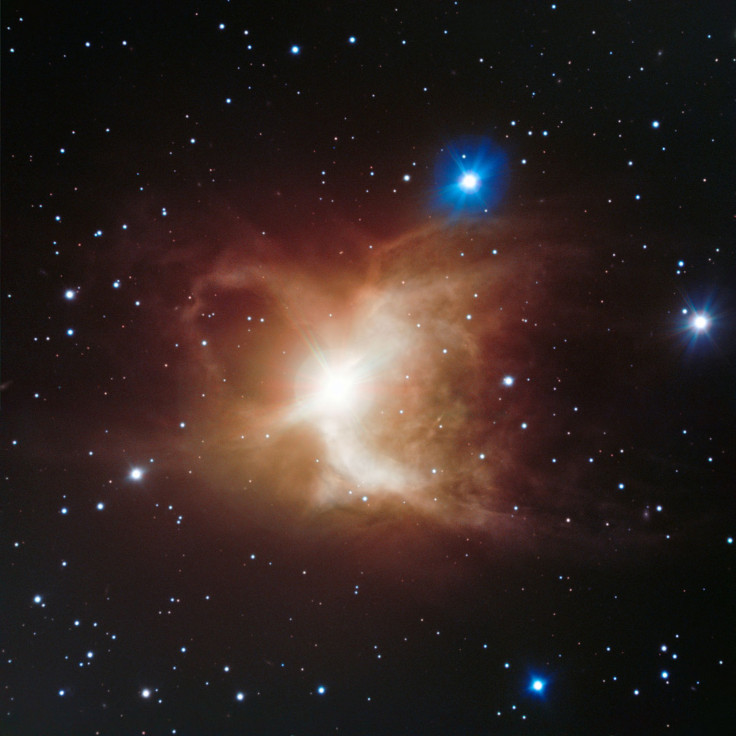A Detailed Look At The Toby Jug Nebula Lit Up By The Red Giant Star Its Center [PHOTO]
The Toby Jug Nebula, IC 2220, is located approximately 1,200 light-years from Earth. The large cloud of dust and gas surrounds a red giant star, HD 65750, that has five times the mass of our sun.

The image was captured using the European Southern Observatory’s Very Large Telescope, VLT. HD 65750 is a massive star that’s 50 million years old. The red giant star is near the end of its evolutionary cycle; stars with more mass burn through more fuel, having burned the majority of the hydrogen necessary for nuclear fusion. As ESO explains, HD 65750’s atmosphere has expanded greatly and is currently burning through a helium shell that sits above carbon-oxygen core.
The Toby Jug Nebula, located in the constellation Carina, is classified as a reflection nebula as the dust within the cloud is reflecting the light of HD 65750. The dust cloud is believed to be made up of carbon, titanium dioxide, calcium oxide and silicon dioxide, also known as silica. It is believed that silica particles are responsible for reflecting the light of HD65750. The nebula is different from other diffuse nebulae, such as the Prawn Nebula.
Classified as an H II Region, due to its high levels of ionized atomic hydrogen, the Prawn Nebula glows due to heat from the young stars stripping electrons from hydrogen. These hydrogen atoms recombine and release energy, causing the surrounding clouds to glow.
The fate of HD 65750 will be that of sun in the future. According to ESO, the sun will eventually become a red giant billions of years from now. Despite the threat of the sun’s atmosphere expanding beyond Earth at that point, our planet will have already become uninhabitable. According to recent research, Earth will move out of the habitable zone between 1.75 billion and 3.25 billion years, getting closer to the sun which will lead to increased temperatures that will evaporate the oceans.
© Copyright IBTimes 2024. All rights reserved.












